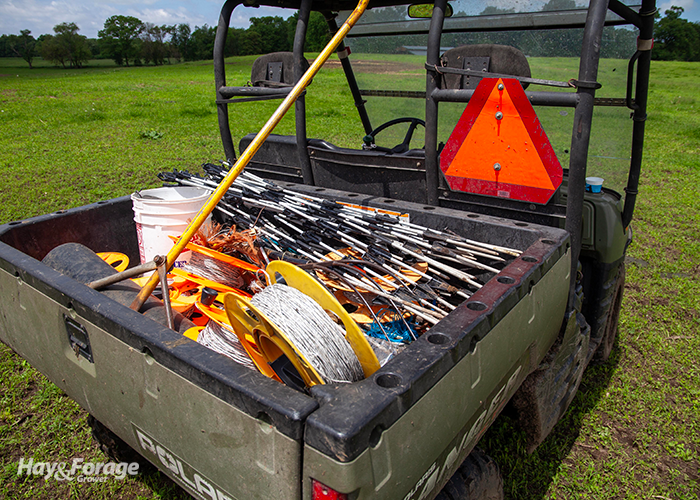Pasture layout often drives grazing success |
| By Mike Rankin, Senior Editor |
|
|
 Few people get it exactly right the first time, but designing a fencing and watering system plays a large role in the efficiency and productivity of the overall grazing system. According to University of Wisconsin grazing experts Jason Cavadini and Laura Paine, a well-designed fencing system that accommodates rotational grazing can make or break the system, especially where livestock are rotated frequently. “Infrastructure design in grazing systems is as much art as it is science because it must be tailored to the landscape and goals of each farm,” note Cavadini and Paine. They say that it takes several years of experience for a farmer or grazing planner to develop an “eye” for designing effective fencing systems. For most effective managed-grazing systems, interior fencing will be temporary and portable. Permanent fencing complements temporary fencing for the fencing system to remain adaptable as weather, herd size, and nutritional needs change through the grazing season. Beyond this overall premise, Cavadini and Paine offer these 15 tips to consider when designing a fencing and watering layout: 1. Utilize permanent fencing to divide the land into management units (blocks of permanently fenced pasture) based on soil type. Different soil types will be suited to different forage species and productivity levels that will be grazed differently. 2. Treat sensitive areas such as stream corridors, concentrated flow paths, or wooded areas as separate management units, fencing them so they can be managed uniquely. Fence grazed cropland as a separate management unit. 3. Where possible, accommodate haymaking by creating management units large enough for harvesting equipment or other mechanical activities. 4. Set up rectangular management units with an approximate width of 150 to 350 feet so individual paddocks will be as close to square as possible. 5. Consider the flow of animals or equipment through the pasture system to determine where gates are needed. 6. Place gates in the corner of management units to allow easy flow of the herd from one unit to the next. 7. Place gates in the middle of long spans of interior fence to allow direct movement of animals across pastures. 8. Design gate openings large enough to accommodate harvesting. 9. Consider how weeds and brush will be controlled along fence lines and how fence placement can help accommodate this task. 10. Consider how to get animals to working and loading facilities from any point of the pasture. 11. Run water lines under permanent fence lines wherever possible. 12. Run water lines between management units so a single water line can be used for two or more units. 13. Plan for ample hookups to allow for water in each subdivision or paddock within a management unit. 14. Avoid placing watering sites near gates. 15. Avoid placing watering sites in concentrated flow paths or critical and sensitive areas. |
